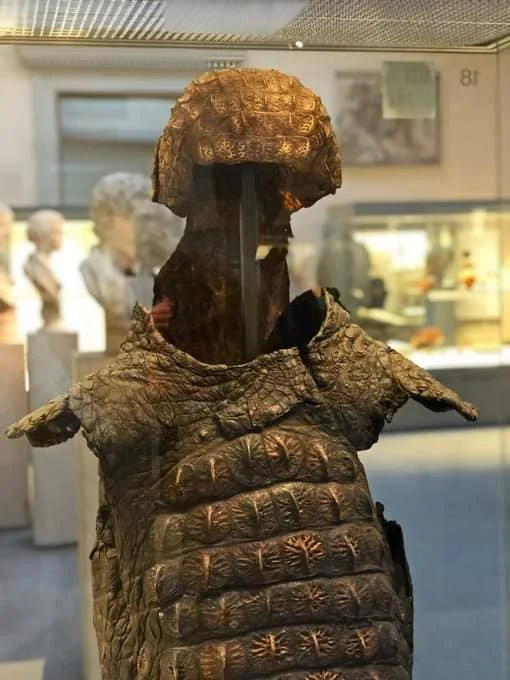The Egyptian crocodile armor was a unique form of body protection used in ancient Egypt, particularly during the New Kingdom period (c. 1550–1077 BC). This armor was made from crocodile hide, symbolizing strength, fearlessness, and connection to the Egyptian god Sobek, the deity of the Nile and fertility.
Get your dose of History via Email
Material and Construction
The armor was crafted using the thick, durable hide of the Nile crocodile. Artisans carefully treated the hide, using tanning methods to make it more flexible and comfortable for wearers. The crocodile’s natural scales provided additional protection, acting as a type of reinforced layer.
These pieces were sewn together to cover the torso, arms, and legs. The armor’s durability and strength made it an effective defense against weapons like arrows and spears. Unlike metal armors, which were heavier, crocodile hide allowed for greater movement.
Cultural Significance
Crocodiles were sacred animals in ancient Egypt, particularly linked to the god Sobek. Sobek represented power, fertility, and protection. Wearing armor made from crocodile skin was more than just practical; it held religious and symbolic meaning. Warriors and high-ranking officials used it to show their connection to Sobek and to invoke his protection in battle.
In addition to its use in combat, crocodile armor was also worn during religious rituals and ceremonies. The armor’s connection to Sobek helped ensure the wearer’s protection and fertility.
Historical Use
Evidence suggests that crocodile armor was worn by specialized groups within the Egyptian military, particularly by warriors stationed near crocodile-inhabited areas like the Nile River. Archaeological finds from sites along the Nile and the Fayum region have revealed remnants of this armor, further confirming its use in ancient Egyptian warfare.
Though it was not as widespread as bronze or leather armor, it held a unique place in Egyptian society due to its symbolic power.
Sobek’s Role in Ancient Egypt
Sobek’s importance in ancient Egypt cannot be overstated. The god was worshiped across various regions, especially in Fayum, where crocodiles were abundant. Temples dedicated to Sobek often kept live crocodiles as sacred animals. These animals were believed to embody the god himself, and their hides were used in making armor to transfer Sobek’s strength to the wearer.
Sobek was also seen as a protector of the pharaohs. This belief likely influenced the use of crocodile armor among Egypt’s elite, further establishing its place in both military and religious spheres.
Archaeological Discoveries
Remnants of Egyptian crocodile armor have been found in several archaeological digs. Some of the most significant finds were discovered in burial sites along the Nile. These burial sites belonged to high-ranking military officials and warriors, who were often buried with their armor.
Researchers have also found crocodile armor in the Fayum region, known for its strong association with Sobek worship. These discoveries provide important insights into the materials and construction techniques used in ancient Egyptian armor production.
Conclusion
The Egyptian crocodile armor represents a unique combination of military practicality and religious symbolism. While its use may have been limited to specific groups within the Egyptian military, its connection to the god Sobek made it an important cultural artifact. Through archaeological discoveries, we gain a deeper understanding of how ancient Egyptians used natural resources like crocodile hide to create effective and meaningful forms of protection.
Source:

